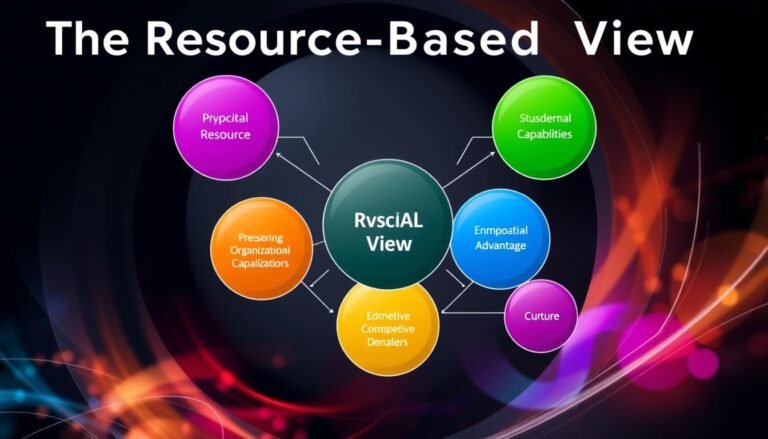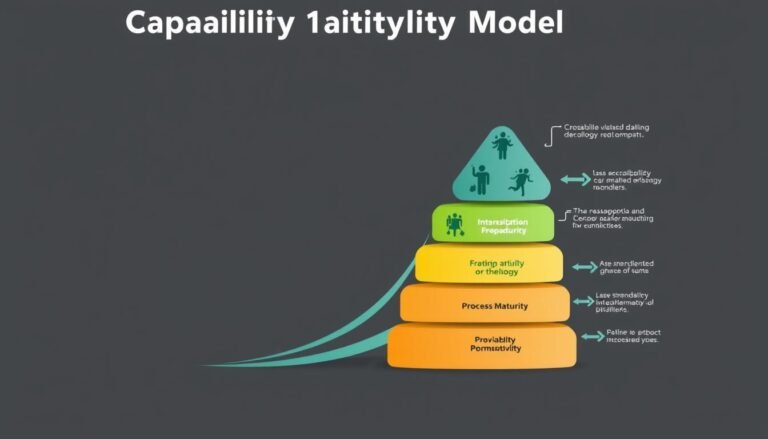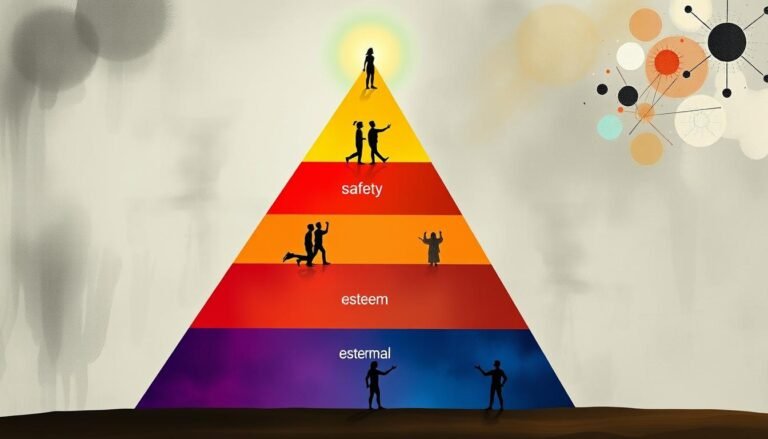Understanding McGregor’s Theory X and Theory Y
Ever wondered why some companies do well while others can’t get their employees excited? It might all come down to McGregor’s Theory X and Theory Y. Douglas McGregor came up with these ideas in the late 1950s. They show two different ways to motivate workers and how leaders see their teams.
Looking into McGregor’s motivational theory, we see how these beliefs change how people work together and perform. Are you ready to learn how these ideas can change how you see motivation in today’s work world?
Key Takeaways
- Douglas McGregor introduced Theory X and Y during the 1950s, highlighting different management approaches.
- Theory X assumes employees dislike work, requiring coercion for motivation, while Theory Y presumes that employees can be self-motivated and creative.
- Understanding these theories can enhance the workplace environment, allowing organizations to align employee and company goals.
- Real-world applications of these theories show the balance of both styles can lead to improved productivity.
- McGregor’s theories remain relevant in various settings, adapting to contemporary challenges in management and education.
A Brief History of McGregor’s Motivation Theory
Douglas McGregor was a key figure in management in the mid-20th century. He made big strides in understanding what motivates employees. His work came when the way organizations worked was changing, especially in how workers and management interacted.
McGregor believed in the potential of people. His famous book, “The Human Side of Enterprise,” introduced McGregor’s Theory X and Theory Y. These theories show two different views on what motivates workers.
Douglas McGregor’s Background
McGregor started his career at the Massachusetts Institute of Technology (MIT) as a professor. His time in management roles changed how he saw managers and their employees. He linked his ideas to Maslow’s hierarchy of needs, focusing on self-actualization as the highest goal.
This idea formed the core of his management philosophy. It supports a leadership style that involves more participation than old-school authoritarian ways.
The Emergence of Theory X and Theory Y
In the 1950s, McGregor came up with Theory X and Theory Y. Theory X says workers don’t like work and need close supervision to do well. This leads to a strict management style.
On the flip side, Theory Y believes workers are naturally driven and want to take on more responsibility. When given the chance, they do great in their jobs. This new way of thinking challenged old management methods and encouraged new ideas in the workplace.
| Theory | Assumptions | Management Style | Impacts |
|---|---|---|---|
| Theory X | Workers are lazy and need control | Authoritarian, rule enforcement | Low productivity, high turnover |
| Theory Y | Workers are self-motivated and responsible | Participative, supportive | High productivity, employee empowerment |
Diving Deep Into Theory X
Theory X has a unique view on how to motivate employees and manage them. It believes people naturally dislike work and need force to meet goals. Managers need to grasp these ideas to lead well.
Core Assumptions of Theory X
Theory X has key beliefs that shape how managers work:
- People dislike work and prefer to avoid it.
- Leaders must use force, direction, and control to keep things running.
- Employees have little ambition and want to be watched closely.
This leads to a top-down management style. Leaders might use close supervision and threats to keep people in line. This can make workers less motivated. It shows how Theory X and Theory Y differ in their effects on the workplace.
Impact of Theory X on Management Styles
Management under Theory X can cause problems at work. Key traits of Theory X leaders are:
- They control every detail of a task.
- They often punish to keep people in line.
- They create a strict, top-down work environment.
This approach can lead to low employee engagement and high turnover. Companies using Theory X might see more people leaving due to feeling unhappy and disconnected. Learning about McGregor’s leadership theories shows how Theory Y can lead to happier, more stable workplaces.
Taking a Closer Look at Theory Y
Theory Y offers a more positive view of human nature than Theory X. It says work can be fun and energizing, like leisure activities, if the right conditions exist. This theory believes in the power of internal motivation at work. It encourages employees to take on more responsibility and lead themselves. McGregor’s ideas on motivation play a big part in how managers lead in organizations.
Core Assumptions of Theory Y
Theory Y is based on several key beliefs about how people behave and what motivates them. These beliefs are:
- Employees naturally want to work and find joy in their tasks.
- Work is seen as a creative and positive activity, not just a task.
- People aim to improve their skills and do well in a team setting.
- Managers should create an environment that encourages teamwork and new ideas.
- Trust and freedom make employees feel important and motivated.
How Theory Y Enhances Employee Motivation
Companies that follow Theory Y make a workplace where people are motivated by what they truly want to do. This leads to many benefits:
- Happy employees who feel trusted and valued.
- A team-focused work environment that boosts creativity and new ideas.
- Better performance as people are more driven to help achieve goals.
- Strong bonds based on trust and respect.
Using McGregor’s management ideas from Theory Y leads to a workplace where growing employees is a top priority. This approach helps the organization succeed. It’s the opposite of Theory X, where strict control can stop creativity and new ideas.
| Aspect | Theory X | Theory Y |
|---|---|---|
| View on Work | Inherently disliked | Natural and fulfilling |
| Management Style | Authoritarian | Participative |
| Motivation | External (rewards, punishments) | Intrinsic (responsibility, collaboration) |
| Role of Manager | Controller | Facilitator |
| Employee Potential | Limited by coercion | Unlimited growth potential |
Looking at McGregor’s ideas, Theory Y has big implications for how companies manage today. It guides organizations towards success by building a culture of trust, creativity, and commitment.
Theory X and Theory Y Comparison
Looking at Theory X and Theory Y shows us how different management styles work. Douglas McGregor’s ideas tell us that Theory X believes employees need close supervision to work well. On the other hand, Theory Y says workers are self-motivated and want to grow and help the company.
Contrasting Assumptions and Implications
These theories have different views on how employees act. Theory X managers think workers dislike their jobs and need constant guidance. This can make the workplace feel strict and centralized.
On the other hand, Theory Y managers believe employees enjoy challenges and want more responsibility. This leads to a more open and creative work environment. It’s perfect for today’s collaborative workplaces.
Real-World Examples of Each Theory in Action
In the real world, we see how these theories work out. For example, Coca-Cola changed from Theory X to Theory Y management and saw big improvements. They got better employee engagement and more innovation.
Tools like Lucidchart, which works with big names like Google and Microsoft, value teamwork and employee ideas. This fits well with Theory Y and has helped Coca-Cola keep its workers happy and productive.
Source Links
- McGregor’s Theory X and Theory Y
- Theory X and Theory Y (& Z): Employee Motivation Explained
- Theory X and Theory Y, Douglas McGregor – Education Library
- Theory X and Theory Y
- A look at McGregor’s X and Y Theory of Management
- The Modern-day Relevancy Of Theory X and Theory Y – Blog
- Leadership: Theory X vs. Theory Y Attitudes — The Encompass Group
- McGregor’s Theory X and Theory Y explained | Management 3.0
- McGregor’s Theory X and Theory Y | Mr. Business Magazine
- Difference Between Theory X and theory Y (with Comparison Chart) – Key Differences
- Douglas McGregor’s Theory X vs Theory Y







